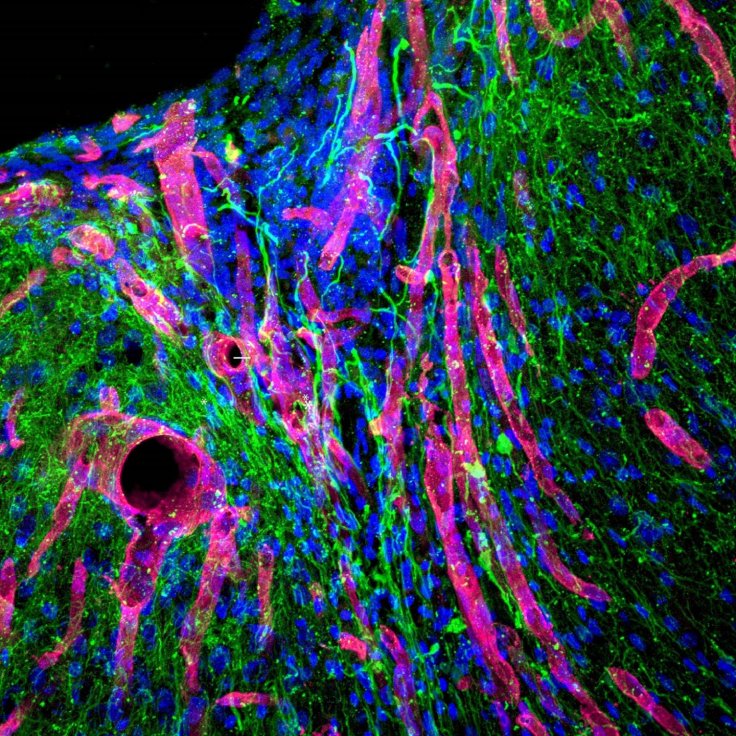
Using a bioengineered gel, a team of researchers at the University of California, Los Angeles (UCLA) has succeeded in regrowing neurons and blood vessels in mice with stroke-damaged brains. Experts consider this development as a major breakthrough and they believe that advancements in this treatment technique will help millions of people suffering from a stroke.
"We tested this in laboratory mice to determine if it would repair the brain in a model of stroke, and lead to recovery. This study indicated that new brain tissue can be regenerated in what was previously just an inactive brain scar after stroke," said Dr. S. Thomas Carmichael, Professor and Chair of neurology at UCLA, Eurekalerts reports.
Regrowing neurons is considered the most tedious task while treating stroke. Modern medicine has not succeeded in regrowing neurons completely after the suffers a stroke, as brain often fails to regenerate new connections, blood vessels or new tissue structures. As a tissue dies in the brain, it leaves a cavity devoid of neurons, axons or blood vessels.
However, this new development may solve this issue, and it may emerge as a solution to regrow dead neurons in the brain. Dr Tatiana Segura, a former Professor of Chemical and Biomolecular Engineering at UCLA revealed that this approach may someday evolve as a new treatment therapy for people suffering from strokes.
During the research, Segura and her team created a gel and injected into the stroke cavity. The gel later thickened and mimicked the properties of a brain tissue, thus creating a scaffolding for new growth. The bioengineered gel was specially formulated with certain molecules capable of stimulating blood vessel growth. The gel also suppressed inflammation, as inflammation will result in scars and will hinder the new growth.
After four months, the team found that stroke cavities have generated new brain tissues including neural networks. Mice with these new neurons showed improved motor abilities. Later, Seguro suggested that this increased motor behavior may be due to the new axons that could be actually working.
"The new axons could actually be working. Or the new tissue could be improving the performance of the surrounding, unharmed brain tissue," Seguro added.
Stroke is one of the most major human killers in the United States. According to statistics, 140,000 people die due to stroke in the US and it is one out of 20 deaths. Every year, more than 795,000 people in the United States suffers a stroke, and this number is increasing year by year.









